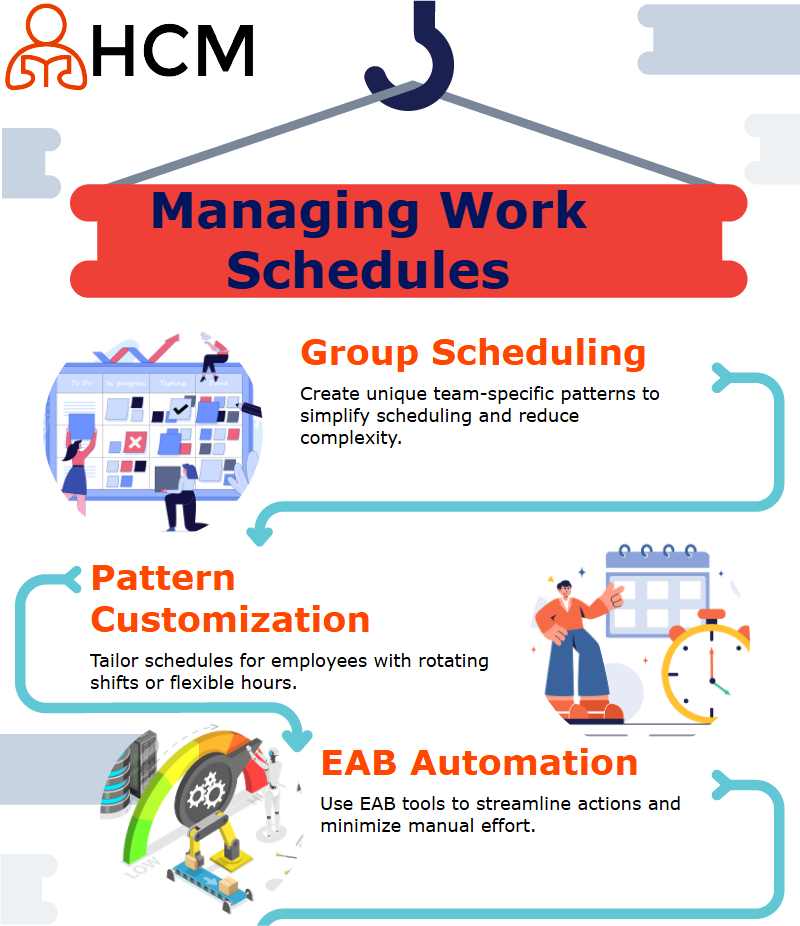Hyderabad’s #1 Choice for Workday Training in Hyderabad {2025}
Workday Time Tracking Tutorial
Topic Overview
Workday Time Tracking
When it comes to managing your time effectively, Workday Time Tracking Tutorial in Hyderabad is a game-changer.
Imagine starting each day with a clear structure and knowing exactly how you’ll tackle your tasks.
With Workday Time Tracking Tutorial in Hyderabad, it feels like I’m speaking directly to you, helping you navigate your work hours efficiently.
One of the standout features of Workday Time Tracking is its ability to adapt to your daily schedule. You can begin your workday with a uniform routine or switch things up based on your preferences.
For those balancing work and family, Workday Time Tracking offers flexibility that’s hard to beat.
You can carve out free time for your loved ones while ensuring you meet your professional commitments. It’s like having a personalized guide that understands the importance of work-life balance.
Workday Time Tracking Validations
Let’s talk about validations. With Workday Time Tracking, you’ll find a clear path to move forward.
It validates your work patterns and ensures you’re meeting your goals without feeling overwhelmed.
We can see the scenarios where this tool has made all the difference, especially for teams aiming for maximum efficiency in a Workday Time Tracking Tutorial in Hyderabad.
Now, if you’re wondering about calculations, Workday Time Tracking has got you covered.
It merges with your work attitudes and provides precise metrics to help you stay on track.
Whether it’s calculating hours or keeping up with your targets, this tool simplifies the process.
And guess what? It’s not just about numbers. Workday Time Tracking also incorporates dynamic features that cater to modern work environments.
From scheduling monthly plans to grouping tasks, it’s designed to make your life easier. It’s like having a compass for your work journey and is often highlighted in any Workday Time Tracking Tutorial in Hyderabad.
Workday Time Tracking Patterns
When you first explore Workday Time Tracking, setting up calculation periods is an essential task.
Imagine marking the period when your weekly transitions occur this ensures that all time patterns are organized efficiently.
Allows you to define patterns for employee’s work schedules. Once you access your tenant, you can view and manage patterns.
It starts by defining a start date to make the pattern applicable to eligible work.
For example, you may set a pattern to begin on a specific day and configure work hours accordingly, just like shown in a Workday Time Tracking Tutorial in Hyderabad.
Creating Patterns in Workday Time Tracking
To create patterns, navigate to the relevant section and use the intuitive plus icon. Begin by setting the pattern’s start time and assigning dates to working schedules.
For instance, you can set work hours starting from 10 AM and ending at 1 PM or 1:30 PM. You can continue configuring working hours for each day of the week.
With Workday Time Tracking, you can create distinct schedules for different weeks. For example, Week 1 might follow a 9 AM to 7 PM routine, while Week 2 follows a different pattern.
You can easily switch between these patterns to accommodate various shifts or scheduling requirements, as explained in a Workday Time Tracking Tutorial in Hyderabad.
Managing Patterns with Workday Time Tracking Tools
Workday Time Tracking provides flexibility in managing work schedules. You can clone existing patterns using EAB (Enterprise Action Builder) tools and assign them to employees based on their shifts.
This ensures that each worker has a clear understanding of their working hours in alignment with a Workday Time Tracking Tutorial in Hyderabad.
If your organization has multiple shifts, Workday Time Tracking supports creating various patterns.
Whether it’s a standard 9-to-6 shift or a customized schedule, the platform simplifies the process for you.
Exploring Additional Features in Workday Time Tracking
The system also integrates well with calendars, displaying fields like the standard 40-hour workweek.
With Workday Time Tracking, you can manage all aspects of employees’ work patterns, ensuring smooth operations and clarity.
Workers can edit their schedules based on availability, creating a seamless experience.
Workday Time Tracking streamlines the process of adjusting patterns for both regular and irregular working hours and is often demonstrated in a Workday Time Tracking Tutorial in Hyderabad.
Features of Workday Time Tracking
Let us understand the Workday Time Tracking it’s an essential tool that allows you to customize schedules effortlessly.
Imagine being able to create a dynamic work pattern where employees can adjust their daily hours without compromising company policies. With Workday Time Tracking, this becomes a reality.
One of the great features in Workday Time Tracking is setting daily restrictions. For example, if you require employees to work a minimum of five hours per day, you can configure it here. This is especially beneficial for industries like manufacturing, where production workers need structured schedules.
With this tool, you can ensure compliance with labor guidelines, such as a minimum of 40 hours a week and a maximum of 60 hours.
Workday Time Tracking also introduces buffers for attendance. These buffers, ranging from 15 to 20 minutes, add flexibility while maintaining order.
If someone arrives slightly earlier or later, this feature ensures their time logging isn’t disrupted.
You have full control to define the buffer periods based on operational requirements.
The customization doesn’t stop here! You can create patterns within Workday Time Tracking tailored to specific job roles or shifts.
For example, you can set a particular pattern for hourly workers and another for salaried employees.
Everything is configurable to align with your organization’s needs through a Workday Time Tracking Tutorial in Hyderabad.

Workday Time Tracking in Action
When implementing Workday Time Tracking, it’s straightforward to configure. For instance, you can set the first day of the workweek to Sunday and define the calculation period to weekly transitions.
This flexibility empowers businesses to cater to diverse scheduling needs.
The editing option in Workday Time Tracking makes it easy to create new patterns. Just by clicking, you can establish the working standards for specific job profiles.
Whether it’s five chains or a production schedule, this feature accommodates a wide array of workflows in a Workday Time Tracking Tutorial in Hyderabad.
Learn how to optimize your work schedules in Workday Time Tracking
Let’s dive into how you can master Workday Time Tracking to optimize your work schedules. First, you have the option to set the start date for your work patterns.
You’ll notice a plus icon on the interface, which allows you to configure the start date effortlessly. It’s as simple as clicking that plus icon and choosing your desired date.
For example, when you select the first pattern date, you can assign it as a working date and add the start time.
This makes Workday Time Tracking incredibly flexible, as it automatically adjusts the hours based on your configuration.
You can repeat this process for additional dates, ensuring an uninterrupted workflow within the Workday Time Tracking Tutorial in Hyderabad.
Streamlining Group Schedules with Workday Time Tracking
When managing multiple teams, Workday Time Tracking simplifies the process of handling group schedules.
By creating patterns specific to each team, you reduce the complexity of managing diverse work schedules.
This ensures that every group has a calendar tailored to their unique requirements. For example, you can create one pattern for Team A with set hours and a completely different pattern for Team B.
With Workday Time Tracking Tutorial in Hyderabad, you’ll learn how to configure and switch between these group-specific calendars effectively.
Understanding Patterns with Workday Time Tracking
Let me walk you through creating patterns in Workday Time Tracking. It’s all about understanding how schedules function. Think about the standard workday pattern something as simple as 9 to 6.
This pattern suits regular employees, but we know the real world isn’t one-size-fits-all. In fact, during a Workday Time Tracking Tutorial in Hyderabad, experts often emphasize how to handle unique scheduling needs, such as for rotating shifts or flex hours.
Implementing EAB in Workday Time Tracking
Here’s where it gets interesting, we’re using EAB for specific actions in Workday Time Tracking. When you look at an employee’s calendar, Workday Time Tracking makes it straightforward.
A regular employee, for example, has consistent 40-hour weeks. You can observe it clearly on their calendar.
Midway through a Workday Time Tracking Tutorial in Hyderabad, you’ll typically explore how to automate these actions using EAB tools to reduce manual effort.
Customizing Restrictions in Workday Time Tracking
Let’s talk about restrictions. Workday Time Tracking lets you set minimum hours. For manufacturing environments or production teams, this is a game-changer.
In a real-world scenario discussed in a Workday Time Tracking Tutorial in Hyderabad, you might enforce rules like a minimum of five hours per day or buffers to handle early/late logins.
This provides both structure and flexibility without compromising operational needs.

Daily Starters and Uniformity of Workday Time Tracking
Daily starters can truly enhance efficiency, and Workday Time Tracking helps maintain uniform standards.
Whether it’s allowing a small buffer or integrating previous records, Workday Time Tracking simplifies the process.
If you join a Workday Time Tracking Tutorial in Hyderabad, you’ll find that setting up these daily routines ensures long-term productivity gains.
Managing Meal Penalties with Workday Time Tracking
When it comes to meal penalties, Workday Time Tracking simplifies the calculation process. If you’re working over five hours without a meal break, this tool calculates your penalty effortlessly.
During a Workday Time, Tracking Tutorial in Hyderabad, you’ll practice configuring automatic penalty rules, especially for regions like California, where labor laws are complex.

Vishwak
I write because the fight to learn is just as crucial as the knowledge acquired; every click, every mistake, every little success.
